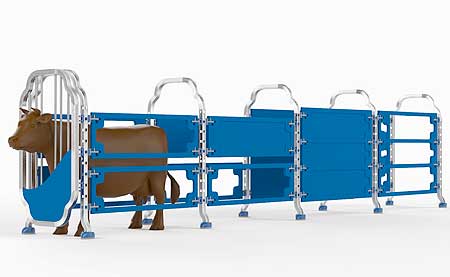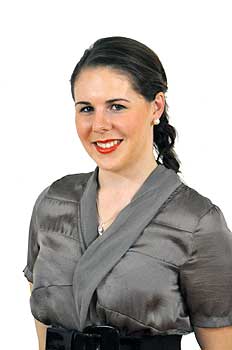Rural designs to ease farm working conditions


Two industrial design students with strong rural backgrounds have developed separate devices aimed at easing the respective tasks of farming sheep and cattle.
Charlotte Pedersen’s Hoofcare Modular Treatment Unit is a mobile contraption that allows the farmer to set up a cattle crush and race, specific to their needs, to help treat cows with any noticeable illness or injuries picked up during day-to-day handling of the animals.
Holly Gaskin’s Electronic Drenching Unit, aimed at improving the performance of sheep drenching, reduces a farmer’s musculoskeletal pain and discomfort during the repetitive task.
Statistics showing there is a lack of young farmers entering the industry were also taken into consideration with Ms Gaskin’s sheep drenching design, mindful of the prevalence of older farmers suffering from arthritic joints, and pre-existing or recurring injuries.
“I wanted farmers to be able to work smarter and not harder, and reduce stress on them mentally and physically during the busiest periods – as when you are tired and you are more likely to get hurt or muck up!”
Ms Gaskin, who grew up on a sheep and beef farm says investigations of the performance of agricultural processes within the sheep industry revealed that sheep drenching was the most labour intensive task for farmers during their busy summer period, Ms Gaskin who grew up on a sheep and beef farm, says.
Ms Pedersen talked to working and retired farmers and vets as well as organising surveys, and found there was a need to address the daily challenges faced by famers in treating dairy cows with diseases such as laminitis, which affects the hoofs of horses and cattle. Walking track conditions experienced by the animals, pressures associated with breeding and raising livestock and the lack of, or insufficient treatments, are causes of this disease.
“Essentially poor treatment can lead to less efficient production from a lame cow and costs related to having to re-treat cows or having to dispose of a good milking cow prematurely”, she says.
Originally from Hawkes’ Bay, the 22-year-old has worked in the dairy industry where she identified a need for safer more effective working conditions for handling cows. The treatment unit could also be used for tagging stock, pregnancy testing and general health care for cattle.
Unlike existing cattle crushes, Ms Pedersen says, to reduce costs her treatment unit can be fully assembled by the user. This is achieved by using a series of hinges, side components and ground securing devices enabling the unit to be easily built and fixed with a few bolts into concrete.
Her mobile treatment unit also features rotating hinges to allow its panels to swing and give the farmer added access to the cow or multiple drafting options.
Both designs featured at Exposure, the exhibition of graduating design students’ work being held at Massey’s Wellington campus earlier in November as part of the annual BLOW creative arts festival.